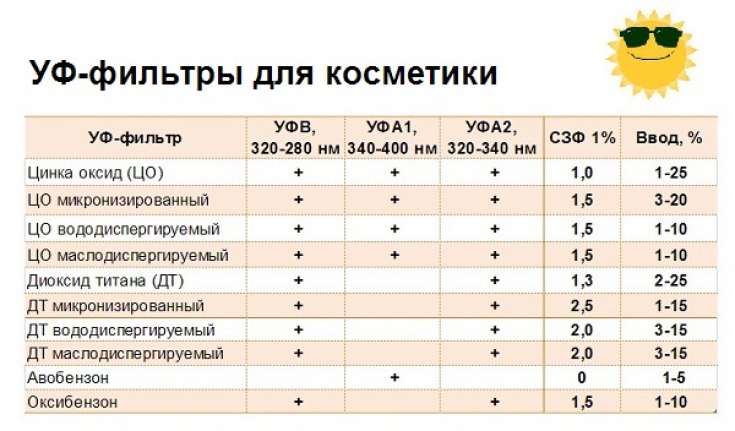The problem of preserving and improving physical beauty has been a concern for mankind not only from the standpoint of modern aesthetic medicine, but also since ancient times.
Kalokagatiya – a concept that was formed by the ancient Greeks many centuries ago and means the combination of external beauty and internal beauty and spirit, and now this term is the slogan of aesthetic medicine. In Socrates beauty − one of the most important categories of the universe.
Read this article on estet-portal.com about the latest in aesthetic medicinethat will help keep your skin youthful and radiant.
UV filters in aesthetic medicine
Particles of zinc oxide ZnO and titanium dioxide TiO2 are used as UV filters in sunscreens. Nanoparticles of these oxides, providing UV protection and absorbing properties, devoid of the chalky white coating of traditional sunscreens. Products based on ZnO and TiO2 are transparent and have increased aesthetics, low odor, are less slippery and are less absorbed by the skin. Today, there are many sunscreens and moisturizers available in cosmetology and aesthetic medicine.
Follow us on Instagram!

There are many modifications to standard ZnO and TiO2 UV protection systems. Company «Oxonica» developed a UV-absorbing system containing TiO2 nanoparticles, and "Nanophase Technologies" produces ZnO polymer nanocrystals smaller than 35 nm. Other nanoparticles are also used for UV protection.
Rohm and Haas produces 300 nm styrene-acrylate copolymer nanoparticles that increase SPF by up to 70%!
Silicon nanoparticles – breakthrough in cosmetology
The silicon nanoparticles used by Sol-Gel Technologies include cosmetic ingredients. Their first product contains UV filters encapsulated in silicon shells. Another acne treatment product contains benzoyl peroxide crystals in silicon crusts.
These developments are now a huge success in the field of aesthetic medicine and the production of cosmetic products. Ciba Specialty Chemicals developed a product that is a 50% dispersion of a new broad spectrum organic UV filter. Particles smaller than 200 nm are oil soluble and can be used as sunscreen alternatives to ZnO and TiO2.
Beauty Boostering: Radiant Skin in an Instant
Application of lipid nanoparticles in cosmetology
Lipidic nanoparticles or nanostructured lipid carriers have barrier properties that make them ideal for potential use in day creams. In vivo studies have shown high efficacy in skin hydration compared to placebo. The UV protective properties of their action have also been proven, increasing after the introduction of protector molecules, for example, 3,4,5-trimethoxybenzoylchitin.
Professional Express Facial: Beauty in 40 minutes
These nanoparticles have been tested in perfumery compositions. They delay the release of perfume for a longer period. Although nanoparticles show promise for aesthetic medicine, they have a number of disadvantages. In particular, it is necessary to improve their design in order to prevent the release of contents during storage, to reduce the water content in the dispersion. Lipid nanoparticles have a high level of adhesion to the skin, forming a thin film on its surface and preventing dehydration. The moisturizing effect and mechanical barrier of lipid nanoparticles are used to reduce irritation and allergic reactions.
Today, there are more than 30 products containing nanoparticles on the world market of aesthetic medicine and cosmetology, and they are positioned as products with increased permeability through the skin.
Nanoemulsions − These are dispersions of nanoparticles of one liquid in another. These water-like liquids or gels − metastable systems whose structure can be changed. Nanoemulsions have many advantages. They can be stabilized to increase the time to surface film formation, extend the life of products, their contents, thus extending the shelf life of cosmetic products without the use of preservatives that can be harmful to the skin.

The smaller the particle size of the emulsion, the higher the stability and the better the ability to tolerate active ingredients. Nanoemulsions are used in various cosmetic products such as sunscreens.
The prospect and practical implementation of solving numerous problems that arise in the field of aesthetic medicine are provided by high science-intensive technologies. Nanotechnology, as one of the most studied high technologies in recent years, has become an important factor contributing to the development of aesthetic medicine.
Most nanotechnological advances are reflected in the solution of various aesthetic problems facing dermatologists, cosmetologists, and plastic surgeons. Scientists are faced with the task of developing high-performance, cost-effective and safe for humans and the environment technologies for obtaining nanomaterials for aesthetic medicine. Research continues, the results of which constantly expand our capabilities and allow us to improve the health and beauty of a person, and, consequently, the quality of his life.
Summer Skin Care: Top 3 Challenges







Add a comment